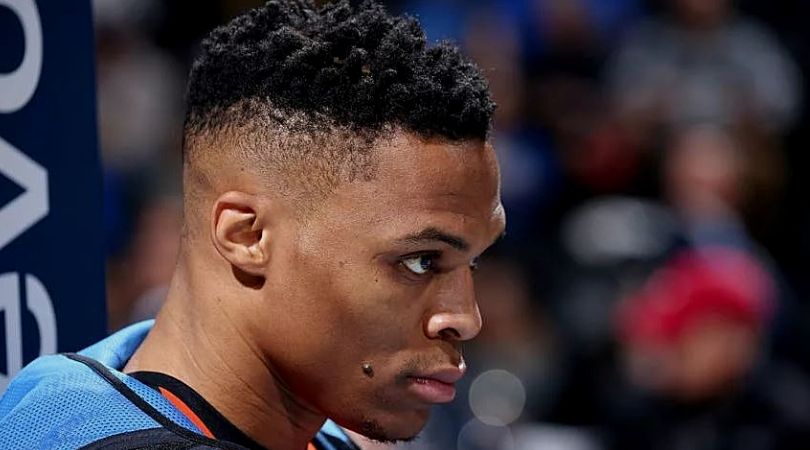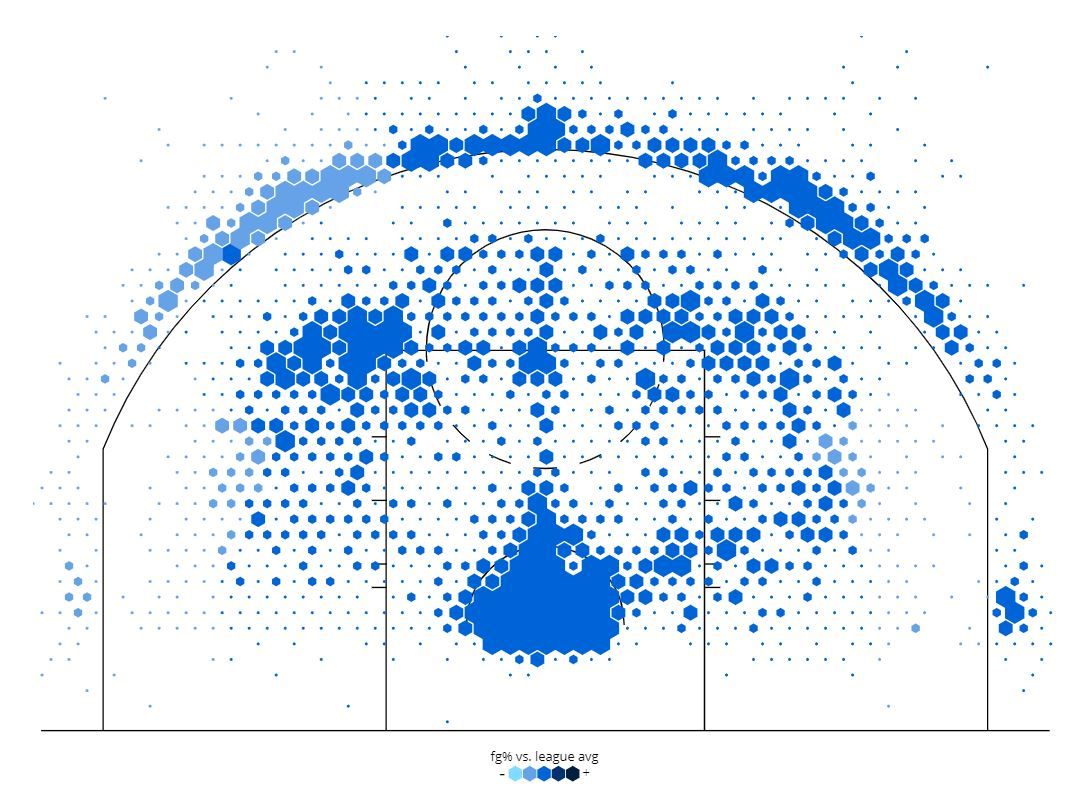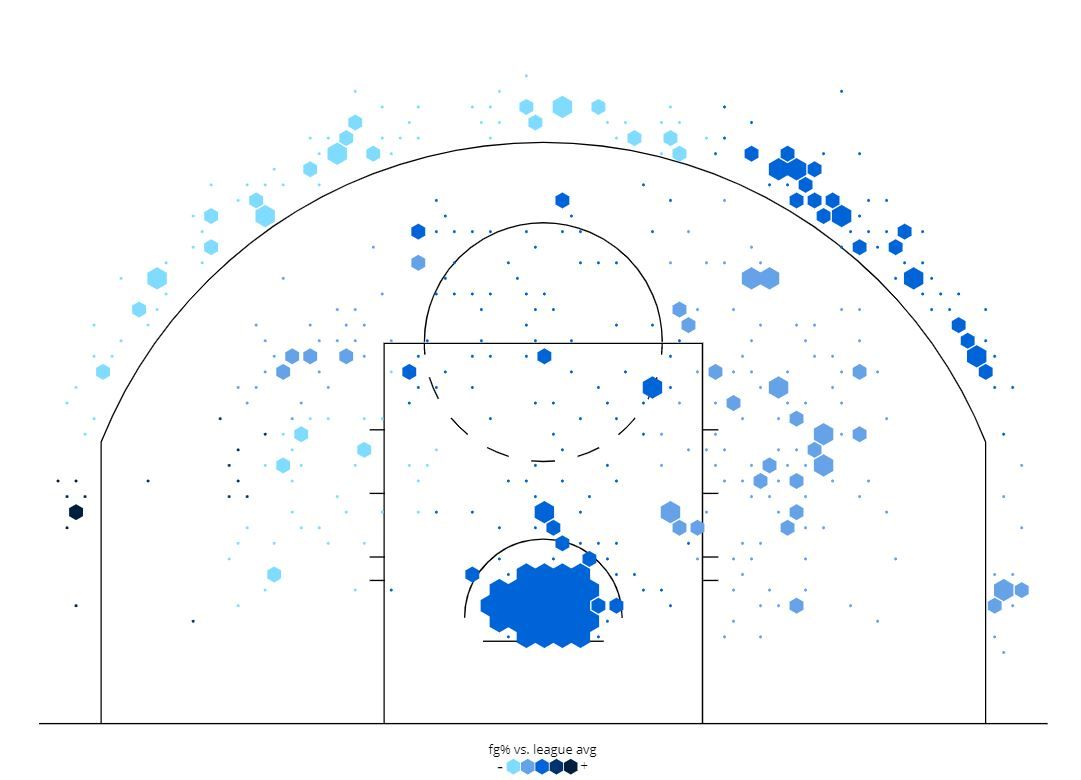For Russell Westbrook, 3-Point Shooting is an Overrated Issue

Before the pitchforks come out and a coup is staged to remove me from Daily Thunder, I’ll say a couple things up front:
No, Russell Westbrook is not a good three-point shooter.
Yes, it’s bad when he takes too many of them.
I’m not here to paint a pretty picture around Westbrook’s efficiency from beyond the arc, as I’m not particularly interested in wasted exercises. The guy has a 24.7 percent conversion rate on nearly five three-point attempts per game this season. As my grandpa used to say, there’s no use putting lipstick on a pig.
Translation: it’s ugly no matter how you dress it up.
That being said, the trendy thing to do when discussing Westbrook’s cellar-dwelling shooting clip is to point at his three-point percentage, gasp audibly, and exclaim “God, why does Russ shoot so many threeeeees?!” It’s low-hanging fruit that seemingly gets lower every day. We’ve all done it and the numbers are too glaring to overlook. I get it.
The thing is — while the former MVP’s inability to convert from long range is an issue, and does impact the Thunder in negative ways, it acts as a red herring in that it masks underlying problems that are more problematic than his three-point shooting itself. Westbrook has never been the guy you want pulling up from 24 feet. Never. He’s a career 30 percent shooter (29 percent last season) from deep, so it’s not like he suddenly fell off a statistical cliff from three-point range in his 11th NBA season. The problem may have gotten worse, but it’s always been a problem. We’re not in uncharted waters here.
While acknowledging his three-point shooting is an issue, the crux of his current dilemma in the shooting department isn’t the errant and ill-advised attempts from long distance. This season, the problem has been his inability to convert in the mid-range and the free throw line — two areas in which he’s historically buttered plenty of bread.
True Shooting Percentage (TS%) is an advanced analytic “intended to more accurately calculate a player’s shooting than field goal percentage, free throw percentage, and three-point field goal percentage taken individually.” It takes into account every shot — live action or not — and produces a resulting percentage that reflects his efficiency on every attempt he takes. It’s calculation looks like this:

For his career, Westbrook has a TS% of 52.9 percent. It was 48.9 percent his rookie season, 49.1 percent in his second season, and was 52 percent or higher in the eight seasons to follow.
Per stats.nba.com, this season Westbrook has a TS% of 47.7 percent. That’s the lowest of his career and 408th in the NBA among players with at least 200 field goal attempts. The three-point shooting certainly plays its role in all of that, but it takes more than a faulty long ball to crater the TS% to those depths. His struggles at the line and in the mid-range are the silent killers lost in the “stop shooting threes!” madness.
According to Basketball Reference, Westbrook is shooting 64 percent on shots between 0-3 feet. That’s the highest of his career, so no issues there, though shots from that range make up 36.6 percent of his total attempts this season — the fifth lowest of his 11 year career.
On shots from 3-10 feet, which account for a little less than eight percent of his total shots this season, Westbrook’s field goal percentage drops to an unbelievably poor 15.6 percent — lowest of his career and far below his career-average of 31.9 percent from that distance.
Between 10-16 feet, his shooting percentage is 31.1 percent — again the lowest of his career and below his career mark of 39.2 percent. Shots from that distance make up about 16 percent of his total attempts this season.
And finally, on shots between 16 feet and the three-point line (long 2s), Westbrook is shooting 37.2 percent in the 2018-19 season. That’s the third-lowest mark of his career on shots that have made up a little less than 16 percent of his attempts through 41 games.
All told, on shots between 3 feet and the three-point line, Westbrook’s shooting percentage is 27.9 percent this season — which is just 3.2 percentage points better than what he’s shooting from three. For his career, he’s hit 36.6 percent of those same attempts. For those not counting, that’s nearly nine percentage points difference in the wrong direction.
For visual representation of his struggles in the mid-range, here is a look at Westbrook’s career shot chart:

Now, compare that to Westbrook’s 2018-19 shot chart:

It’s not difficult to spot the difference between the two. The former MVP is really struggling from everywhere — not just from beyond the arc.
Things are a lot less complicated at the free throw line, even if they remain entirely unexplained. Westbrook is shooting 64.9 percent on nearly six attempts per game at the stripe — the lowest overall percentage of his career on the lowest volume since his second year in the league. He’s leaving a little more than two points per game on the table due to his issues at the line, which is critical when you consider the parity that exists in today’s NBA, particularly in the Western Conference.
For a player with a career free throw percentage of 80.6 percent, it’s simply unacceptable. And bizarre. And a little bit infuriating.
Taking all of Westbrook’s shots into account, not just the three-pointers, paints a different picture than what most see when looking at his 2018-19 campaign. The Thunder could live with sub-25 percent shooting from long distance — even at five attempts per game — if he was having more success elsewhere. I’m not so certain the same applies if he’s generally ineffective from both.
Long story short: Westbrook’s inability to put the ball in the basket extends far beyond what’s happening from long distance — even if that’s what dominates the story lines. The most concerning aspect of this shooting slump is playing out quietly a little closer to the basket and at the line. Correction in these departments would prove to be of far greater importance to the Thunder than marginal improvement from beyond the arc. He’s never been good from three, but he’s never been this bad from everywhere else.

